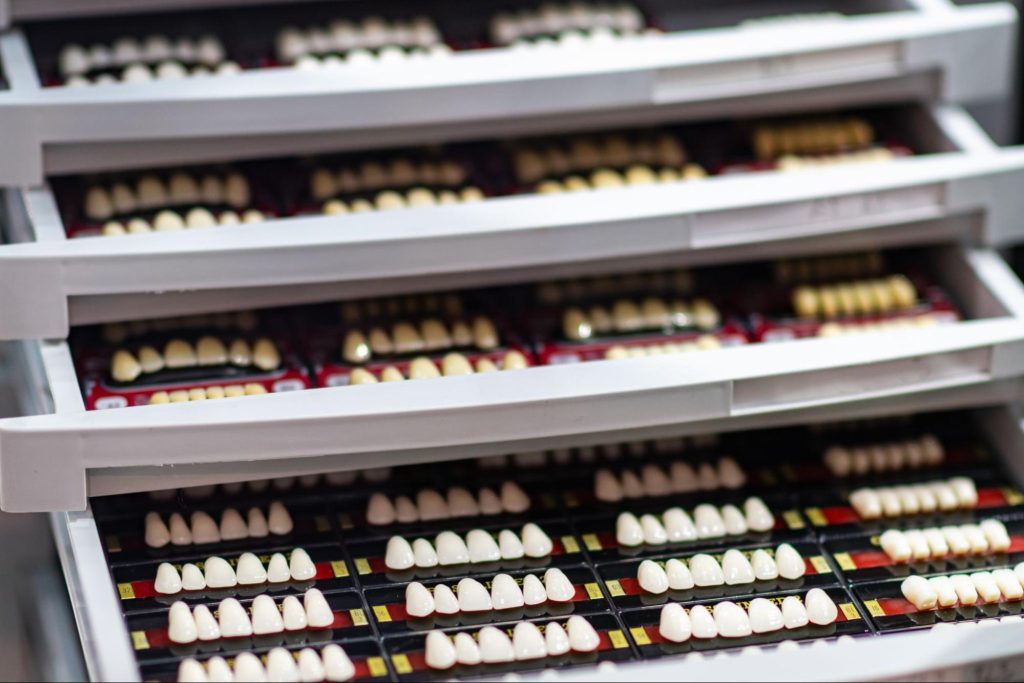A great smile makes a lasting impression. But chips, gaps, or stains can take that confidence away for many. Veneers offer a real solution, not just a surface fix, but a lasting change. They aren’t magic, but they come close when done right. People want answers that make sense, not hype or sales talk.
How Do Veneers Work to Fix Common Tooth Issues?
Veneers are thin, custom shells that cover the front of teeth. They’re made to match natural tooth color and fit seamlessly. Dentists use them to improve shape, color, and alignment. They work by creating a flawless outer layer that hides damage underneath.
What Are the Different Types of Veneers?
Veneers usually come in two types: porcelain and composite. Porcelain veneers are stronger and more stain-resistant. They reflect light like natural teeth and last longer. Composite veneers are more affordable and require less prep. But they don’t resist stains as well and may wear out sooner.
Conditions Veneers Can Fix
Veneers are great for stained teeth that don’t respond to whitening. They also work well on chipped or broken teeth. If you have uneven spacing, small gaps, or mild crowding, veneers can mask it. However, they won’t fix major bite problems or severely misaligned teeth. A dentist may suggest braces or other treatments instead.
How Do Veneers Work Step-By-Step in Practice?
Getting veneers involves planning, preparation, and precision. The whole process can take two to three visits. It isn’t rushed because details matter. Each step builds toward a result that looks and feels right:
1: The Consultation and Smile Planning
Your first visit is about seeing what’s possible. The dentist examines your teeth and listens to your goals. You’ll see previews of how veneers can reshape your smile. That is where your personal style and facial balance come in. A custom treatment plan is made just for you.
2: Tooth Preparation
The dentist reshapes each tooth slightly to fit the veneer. Usually, this means removing a thin layer of enamel. This step ensures a natural look and tight fit. You may get local anesthesia to stay comfortable. The result is a base for long-lasting results.
3: Temporary Veneers and Impressions
After prepping, the dentist takes molds of your teeth. These go to the lab to craft your permanent veneers. Meanwhile, temporary ones protect your teeth and preview the final look. They help you adjust to the feel and shape. This stage also lets you give feedback.
4: Veneer Creation and Bonding
Once the lab finishes, you return for bonding. The dentist carefully checks fit, color, and alignment. Your teeth get cleaned and etched for strong bonding. Then, the veneers are cemented in place and cured with light. After a polish and final check, your smile is ready.
How Do Veneers Work After They’re Placed?
Veneers are strong, but they’re not invincible. You still need to care for them like natural teeth. Good habits make them last longer and look better. Poor care, on the other hand, shortens their life quickly.
How Long Do Veneers Last?
With proper care, porcelain veneers can last ten to 15 years, while composite ones may last five to seven years. The difference is due to materials and habits. Grinding your teeth or biting hard objects shortens the lifespan of veneers. Dentists may suggest a nightguard to protect them.

Do Veneers Stain or Break?
Porcelain resists stains better than natural teeth. However, dark drinks like coffee or wine can still cause discoloration. Composite veneers stain more easily over time. Veneers can chip or crack from trauma or bad habits. Avoid using them to open packages or chew on ice.
Dental Care Tips for Veneers
Brush twice daily with a soft-bristled brush. Floss gently but thoroughly every day. Avoid abrasive toothpaste or whitening strips. See your dentist every six months for checkups and cleanings. Don’t skip visits, even if your veneers still look perfect.
How Veneers Offer More Than Cosmetic Benefits
Veneers fix more than cosmetic flaws. They give people a reason to smile without hesitation. Still, it’s not a casual choice. Knowing the pros and cons helps you decide with confidence:
The Pros of Choosing Veneers
They can change color, shape, and size all at once. They improve your smile fast, sometimes in two visits. Veneers don’t require major surgery or a long recovery. Unlike crowns, they preserve more of your natural tooth. Most people report higher self-esteem after treatment.
The Trade-Offs to Consider
Getting veneers means removing some enamel for good. Once started, the process can’t be reversed. Cost is also something to consider—veneers aren’t cheap. Insurance rarely covers them because they’re seen as cosmetic. You also need to stay committed to dental care.
Are Veneers Right for You?
Every mouth is different, and veneers aren’t one-size-fits-all. They can be life-changing, but only if they match your needs. A competent patient knows what to ask and when to pause. Start with an honest look at your dental goals.
Are Veneers Right for Me?
Good candidates have healthy teeth and gums. If you have decay or gum disease, fix that first. Veneers won’t help if you grind your teeth unless you protect them. They’re best for cosmetic fixes, not major bite issues. Other options, like bonding or braces, may work better for some.
What to Ask Your Dentist
Start by asking how many veneers you’ll need. Then, ask what type, porcelain or composite, is best for your case. Find out how long they’re expected to last. Ask about the risks and what happens if one breaks. And always request to see before-and-after photos of past patients.
How Do Veneers Work vs. Other Dental Options?
Veneers aren’t your only option for fixing your smile. Other treatments can also improve appearance, function, or both. Knowing how veneers compare helps people pick the right tool for their goals. No single option fits every case:
Veneers vs. Bonding
Bonding is quicker and cheaper than veneers. It uses tooth-colored resin to fix chips, cracks, or gaps. But bonding stains faster and wears down sooner. Veneers last longer and look more natural, especially with porcelain. Bonding is better for minor fixes or smaller budgets.

Veneers vs. Crowns
Crowns cover the entire tooth, not just the front. They’re used when a tooth is badly damaged or needs full support. Veneers are less invasive and save more natural structures. But crowns are stronger and can fix deeper issues. Dentists usually recommend crowns for significant decay or root canal cases.
Veneers vs. Braces or Aligners
Braces and clear aligners move teeth into better positions. They fix crowding, spacing, and bite problems over months or years. Veneers offer faster results but only mask the issue—they don’t change alignment. Some people get both: braces first, then veneers for shape and color. It depends on your goals and timeline.
How Do Veneers Work by Staying in Place?
Veneers seem simple, but there’s real science behind how they stay in place. Dentists use advanced adhesives and precise tools to bond veneers securely. Each step, from etching enamel to curing the resin, matters for durability. Materials also evolve, making veneers better than ever.
How Veneers Bond to Enamel
The bonding process starts by slightly roughening the enamel. It gives the adhesive a textured surface to grip. A special dental resin is applied and cured with light. It hardens and fuses the veneer to the tooth. The bond is strong only if the surface is clean and prepped correctly.
The Role of Light-Curing and Resin
Light-curing uses a blue LED to activate the bonding agent. This step locks the veneer in place within seconds. The resin must match the veneer and tooth color to stay invisible. Too much or too little resin affects fit and strength. Done right, the bond is nearly as strong as natural enamel.
New Materials Making Veneers Last Longer
Modern veneers use advanced ceramics like lithium disilicate. These resist cracks, stains, and temperature changes better than older materials. Labs can now mill veneers using digital scans for perfect accuracy. Some materials even allow ultra-thin veneers with no tooth reduction. Innovation keeps pushing veneers closer to natural perfection.
How Do Veneers Work for Different Age Ranges?
Age changes teeth; what works at 25 might not work at 55. Veneers can be an option for nearly any adult, but needs vary. Younger patients often focus on aesthetics, while older ones consider function and longevity. Tailoring the treatment by age improves outcomes and satisfaction.
Veneers in Your 20s and 30s
Younger patients often seek veneers for cosmetic upgrades. Common reasons include stained teeth, minor gaps, or wear from grinding. These patients tend to have strong enamel and gums, making veneer prep easier. However, long-term planning is key since veneers need replacing later in life. Dentists may suggest more conservative options first.
Veneers in Your 40s and 50s
At this stage, people often deal with older dental work or subtle wear. Veneers can restore a youthful look while protecting enamel. Gums may recede, so precise placement matters more. Patients should check for grinding habits or bite shifts. A well-planned veneer case can take years off a smile.
Are Veneers Safe for Older Adults?
Older adults can still be great candidates if their teeth and gums are stable. Some may need prep work like gum treatment or replacing old fillings. Bone density and gum recession affect veneer planning. Dentists take a conservative approach to avoid weakening teeth. With proper care, veneers can age well, even into the 60s or 70s.
How Do Veneers Work? A Personal Decision to Improve Quality of Life
There’s nothing casual about changing your smile. It’s personal, and it’s permanent. And it should feel like your choice, not pressure from a mirror, a trend, or a sales pitch. Veneers aren’t about perfection; they’re about control. You decide how you want to look and how much of yourself you want to show. When the moment feels right, take the step that reflects the version of you you’re ready to own.
Ready to learn more? Visit the Meader Family Dentistry blog for expert insights and honest answers about your dental options.






